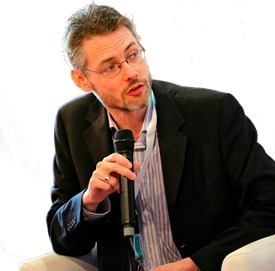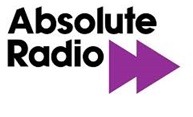When it comes to digital initiatives, I’m often asked, “But who’s doing it right?”
And if you search the web hard enough, you’re likely to find an interesting idea here, or a clever application there.
 But in terms of big picture thinking, it’s scattershot at best. This seems to be especially true of radio station websites, often dismissed by PDs and talent as slow, cumbersome, hard to change, and largely unresponsive with listeners. Most of them love the instant gratification of social media and other more immediate tools that can provide high impact in almost real time.
But in terms of big picture thinking, it’s scattershot at best. This seems to be especially true of radio station websites, often dismissed by PDs and talent as slow, cumbersome, hard to change, and largely unresponsive with listeners. Most of them love the instant gratification of social media and other more immediate tools that can provide high impact in almost real time.
So when I got the “You’d better take a look at this” email from Larry Rosin that pointed to James Cridland’s new blog post about Absolute Radio’s new web strategy – and site – I thought it was worth sharing with you.
I checked in with James who is a keen observer of worldwide digital trends. His observation about many radio station websites here in the States?
“Looking in from outside, U.S. radio broadcasters are interestingly different from many others. Nowhere is this more obvious than a cursory look at an American radio station website. Small text and no white space, all to ensure that there’s space for more flashing, low-rent ad banners surrounding the content. The pursuit of page impressions and ad banners is historically how we monetise our websites. But, for radio companies, is it always the right way?”
At least he didn’t equate our sites to the outfield wall in minor league baseball parks. James went on to add this thought about how the U.K.’s Absolute Radio approaches these website/streaming challenges and opportunities:
“Unusually for a UK company, Absolute Radio uses ad replacement – and uses the space in the spot set to play more music and give users personalised ads that go for ten times the price. And they’ve a new thought about their website…”
So on that note, I thought I’d go ahead and simply post James’ analysis of Absolute Radio’s site, and let you explore on your own. Here’s what he wrote:
Absolute Radio’s new website – technically beautiful, commercially brave
The new Absolute Radio website is more than just a lick of paint: it’s a different way of thinking about a radio station online
By James Cridland – posted 28 October, 2014
Visitors to the new Absolute Radio website, launched yesterday, might be forgiven for thinking that something’s not there.
The website – fully responsive, displaying perfectly on any screen, looks impressively different for a radio station website. Very large images, with vibrant, crisp artwork all over the place, and a carefully minimalist design that exudes the brand identity of the station.
The station’s taken a leaf out of Google’s Material Design and the latest version of OSX – flat design with subtle animations are all over the website, with the purple brand accent colour front and centre. It replaces separate websites for individual Absolute stations with one for the entire brand – the schedule shows all the stations, and the presenters page lists presenters across all the stations, not just the ones on the main service.
It’s only after playing with it for a little while that you’re struck by what’s missing.
There are no banner ads.
The website’s still being monetised, with their competition section still there, and a newly-promoted ticket store – but there are no banner ads, no twiddly buttons, no MPUs, nothing. And this is highly deliberate.
Speaking to Bauer’s Digital Product Director Anthony Abbott over a coffee a few months ago, he was animated about this strategy.
From his point of view, chasing page impressions is increasingly irrelevant. Much brand engagement now happens away from websites – particularly on social media and within mobile apps. Couple that with the ever-lowering cost-per-thousand of ad banners, he has a better idea how radio stations can earn revenue online: by getting the audience to sign in and listen.
Absolute’s inStream strategy of offering personalised advertising when you listen online is offering significantly higher yield to the brand, in a business that has seen raw spot-rates fall almost consistently over the last twenty years. The opportunities that “big data” can offer the radio industry is high. Yet, almost entirely, these opportunities are not taken by radio stations.
This new website’s strategy is that, by chasing sign-ins and listening, they focus on the main business of a radio station: increased audience, and engagement with their audience. That’s smart. And the right thing to do, I think.
James goes on to discuss some of the technical features of the site, and you can read the rest of his post here.
Yes, the sensibilities are different from nation to nation, but a great consumer experience is at the heart of Absolute Radio’s web and streaming efforts. They have rethought the traditional radio approach and have come up with innovations and ideas that are worthy of discussion, analysis, and perhaps, emulation. This is especially true in the ongoing discussion of what radio must do in order to remain competitive in the expanded digital media landscape.
 I would very much like to hear from you after you test drive it – Absolute Radio.
I would very much like to hear from you after you test drive it – Absolute Radio.
We learn from each other, and I believe there’s a great deal of learning we can do here.
James Cridland is a radio futurologist based in the UK: a speaker, consultant, writer, and all-around good guy. You can subscribe to his weekly newsletter at james.cridland.net.
- Media And Technology In 2025: Believe It Or Not! - April 18, 2025
- In Radio, You Just Never Know - April 17, 2025
- The Secret To Making A Great Podcast (And Great Radio) - April 16, 2025




Leave a Reply